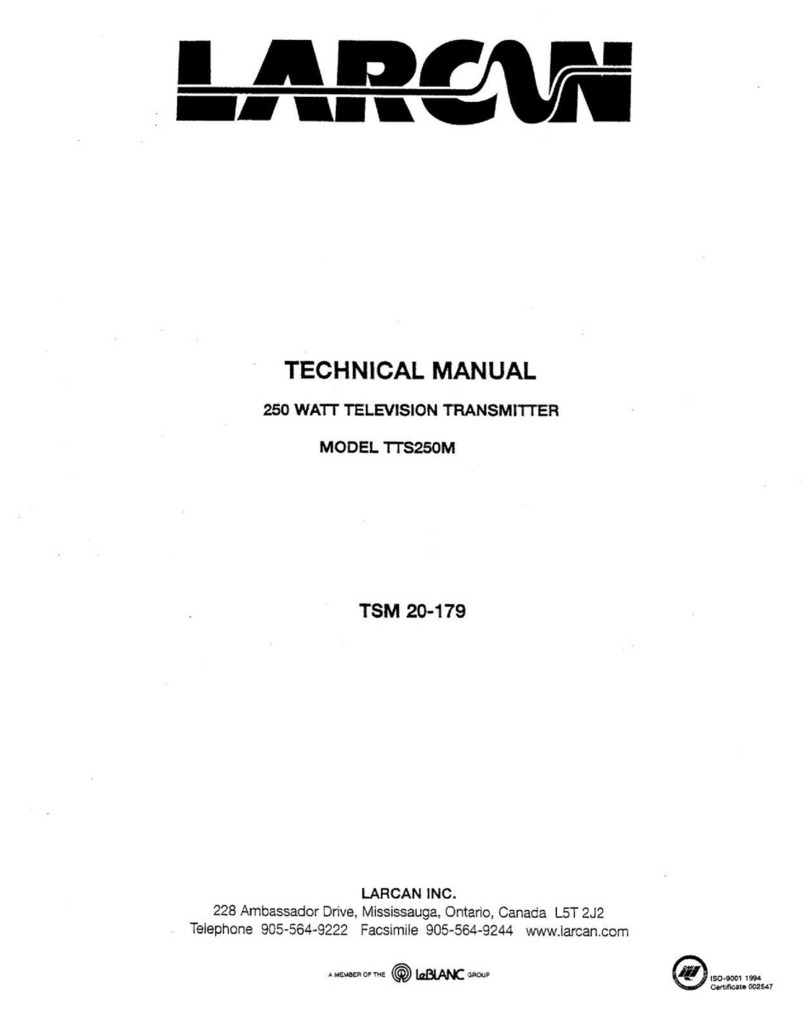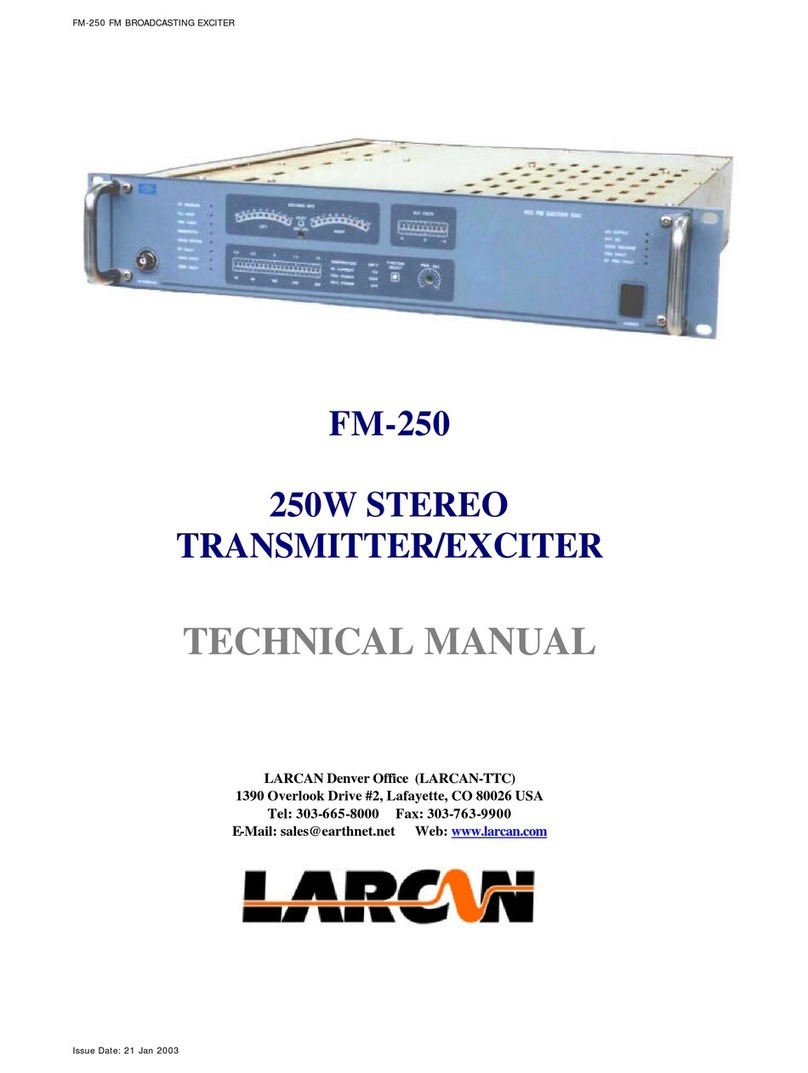
POWERAMPLIFIERLOWBAND
PUB96‐28Rev2Aug.2007 28-2PAModule,
R3andR6provideaDCpathforbias,andprovideloadingatlowerfrequencieswheregateimpedanceishigh,in
ordertoassistinmaintainingamplifierstability.ThechoiceofC6andC7values,andtheseriesinductanceof
boardtraces,alsoensureseffectivebypassingatcriticalfrequenciesofinterest.
Theoutputmatchingπ‐network,consistingofinductorsL3thruL8,andcapacitancesC13thruC16,transforms
theverylowoutputimpedanceoftheFET,to12.5Ω.Thetwoantiphaseoutputsignalsarefinallycombinedin
balunT2,L9.JumpersplacedacrosspartsofL7andL8,plusthechangedvaluesofC13,C14,C15andC16,
configuresthesystemforchannels5&6operation.
DCisappliedtotheFETdrainsthroughL3,L4fortheQ1Ahalf,andL5,L6fortheQ1Bhalf.L3andL6areshort
sectionsofmicrostriplinewhichtransformtheimpedancesofL4andL5tohighervaluesasseenbytheFET.RF
andlowerfrequenciesarebypassedwithparalleledC5,C9,C10foronehalfoftheamplifier,andC8,C11,C12
fortheotherhalf.Thesegroupsofcapacitorsareselectedinvalueandfortheirinternalequivalentseries
inductancessothattheywillbeaneffectivebypassatcriticalfrequenciesofinterest,includingvideo,toassistin
maintainingstability.
NotethatfusesareprovidedforthevoltagesuppliedtotheFETdrainconnections.Theintentofthesefusesis
toprotectthesurroundingcircuitryintheeventofadevicefailure.Thenormalfailuremodeofactivedevices
suchastheseisshort‐circuit,andthefusewillblowinthiscase,isolatingthedefectivedevicefromtherestof
themoduleandtransmitterpowersupply,allowingtheremainingdevicestokeepoperatingnormally.Ablown
fusecanserveasavaluabletroubleshootingaid,whentryingtoidentifyfaileddevices.
6‐WayCombiner/OutputBoard
Partnumber:40D1472G1/40D1472G2
References:Figure6andFigure3.
Thesixamplifieroutputsareappliedtothree2‐wayWilkinsoncombinersandphasedelayedtocorrectthe
quadratureconditionimposedbytheinputsplitterboard.ThethreeoutputsoftheseWilkinsoncombinersare
againcombinedbya3‐wayWilkinsoncombinerintoasingle50ohmoutput.TerminationsfortheWilkinson
networksaresimilartothoseprovidedontheInputboarddescribedabove,andconsistofR100,C105,R102,
C115,R104,C125forthe2‐ways;andR106,L106,R107,L107,andR108,L108forthe3‐waycombiner.An
outputmatchingπnetworkisformedbyC131thruC134,C136,C137,andC141,alongwiththeseries
inductanceoftheboardtrace.
AdirectionalcouplerfeedsaBNCconnectoronthemodulefrontpanel,andcanbeusedforoutputmonitoring.
Thebi‐directionalcouplerprovidesDCsamplescorrespondingtobothforwardandreflectedpowertotheVSWR
protectionboardformonitoringmodulegainandVSWRprotection.Terminationsforthesecouplerlinesections
areprovidedbyR113,R114,andR115;theRFsamplesforVSWRmonitoringaredetectedbyCR100,C143,and
R112for"forward"andbyCR101,C146,andR116for"reflected".
VSWRControlBoard
Partnumber:20B1549G1
References:Figure7andFigure8.
TheVSWRcontrolboardperformsanumberoffunctions:itprovidesregulatedbiasvoltagestotheFETpower
amplifierstages,itprovideshot‐plug‐incapabilitytoprotecttheamplifiermodulewhenpluggedintoan





























